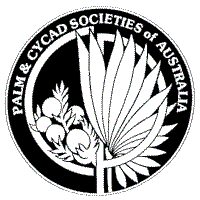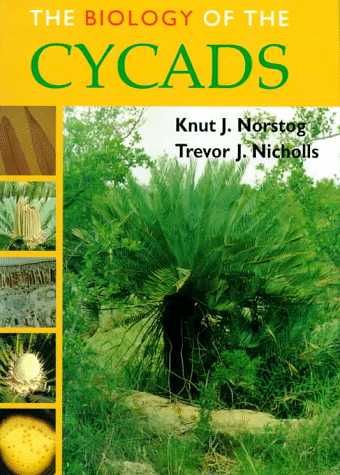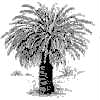|
Book Reviews
The Biology of The Cycads |

| |||
|
| ||||
|
Authors:
Knut Norstog and Trevor Nicolls
In their preface, Norstog and Nicholls state modestly that they hope The Biology of The Cycads "will be useful as a review of current knowledge of cycads for research workers and students of biology, and yet also appeal to those whose main interests are in the field of conservation and horticulture rather than academic biology." Their newly-released 363 page hardcover text most admirably achieves those objectives. More so, I predict that this book will prove to be the most significant text ever published in the field of cycad literature. The Biology of The Cycads represents a compendium of data on all aspects of cycad biology, summarising very concisely a vast repertoire of widely scattered and very diverse research information. Despite this extensive coverage, the book is clearly written and well organised into readily digestible sections. Topics covered include morphology, anatomy, reproductive processes (especially pollination and insect associations - a special interest of Norstog's), population dynamics, toxicity, cytology, cytogenetics, cycad fossils and species descriptions of cycads grouped into Old World and New World taxa. |

|
|
The text evolved, rather indirectly, from
an unpublished series of notes of Charles
Chamberlain's, these being passed to
Knut Norstog after Chamberlain's death
in 1942. Norstog is known to many of us
through his association with Fairchild
Tropical Garden, and more recently, with
Missouri Botanic Garden. Nicholls is an
endocrinologist at Bristol University. The
authors make the interesting - and
appropriate - analogy that "the cycads are
the Rosetta Stone of seed-plant
evolution" and this concept runs as a subtle
but coherent theme throughout their text.
Published by Cornell University Press, the book is copiously illustrated with informative drawings, tables, maps and photographs and a central section which groups together 134 colour plates, only few of which have previously been seen. An extensive glossary defines the scientific terms used and the 21 pages of references themselves comprise a most useful bibliography. I noticed only a very few errors in my perusal of the text, e.g. the picture of Encephalartos woodii on p. 64 is of the plant in Durban Botanical Gardens, not Pretoria; secondly, the locality for Encephalartos delucanus , shown on the map on p. 240, seems to be about 2000 km too far to the west; thirdly, I did not see any reference to the phenomenon of thermogenesis in male cycad cones, which is an important component of the whole complex pattern driving the odour volatilisation to attract the specific pollinators etc. Finally, I do not think that this text is the appropriate vehicle to question the taxonomic validity of Cycas taitungensis (p. 210, the authors maintaining that the Taiwanese cycad should retain the name Cycas taiwaniana ). However, these are minor points and in no way detract from the book's value. The Biology of The Cycads is available through the PACSOA bookstore. It deserves a place - and a handy place - in the libraries of all cycadophiles. Contributed by: Roy Osborne (from Palms & Cycads, No. 59 Apr-Jun 1998). |
 |
 |
 |
 |
 |
 |
||||